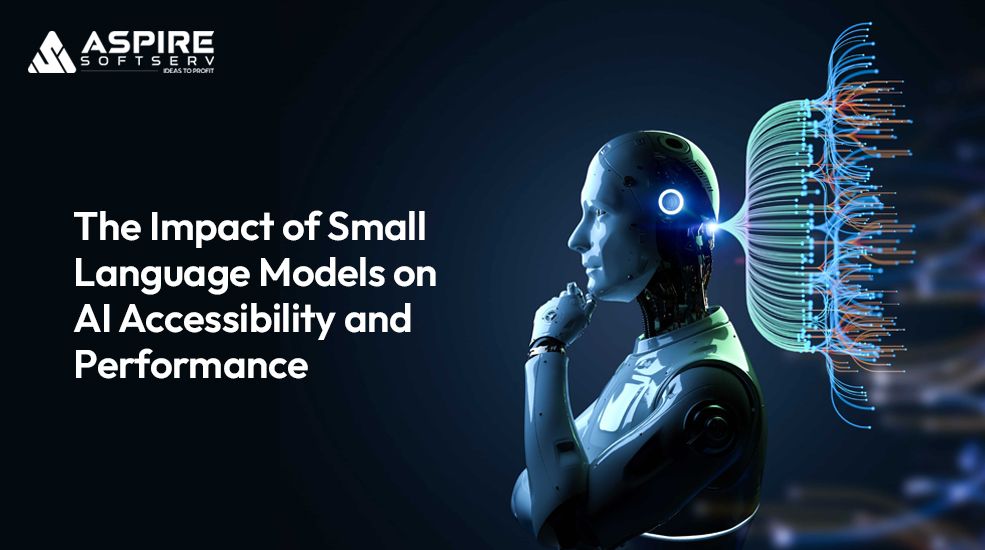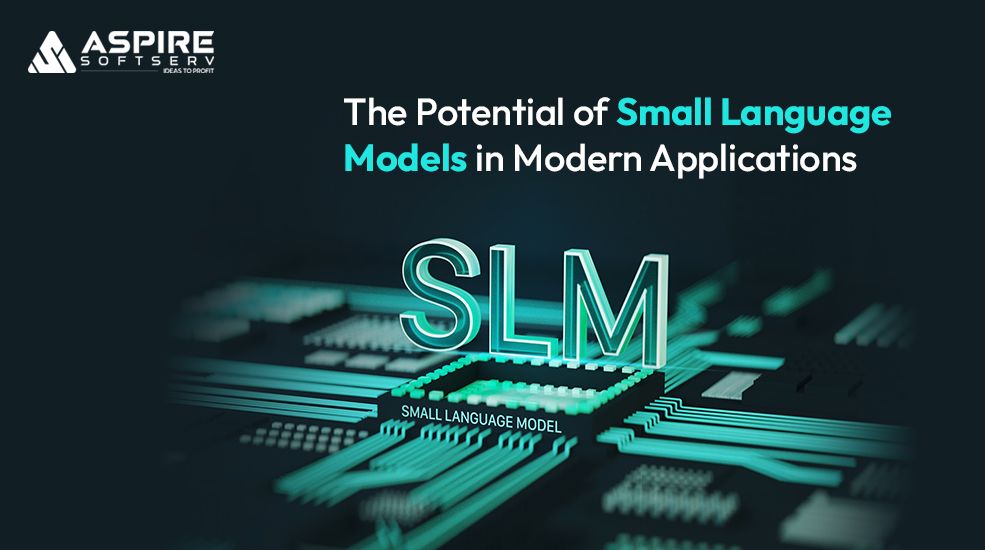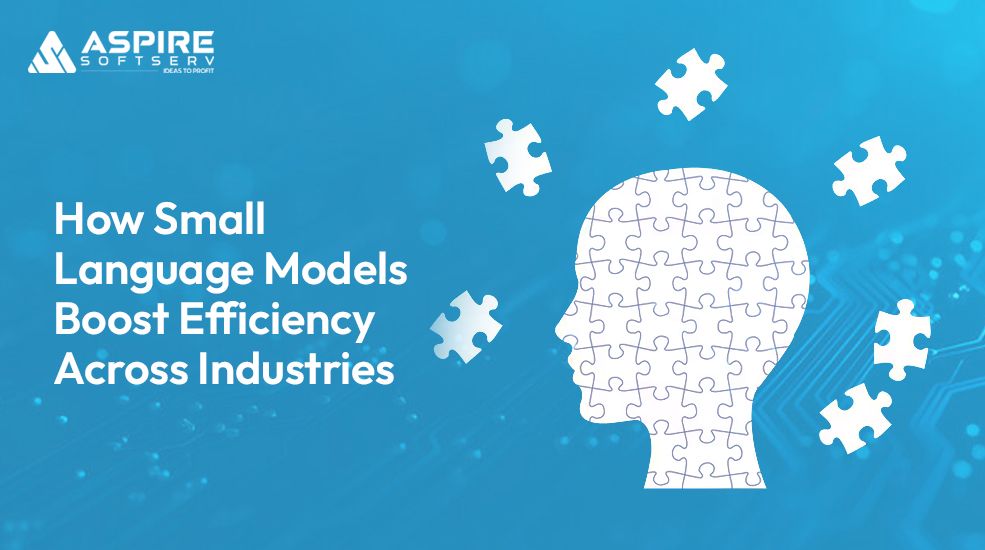
In recent years, small language models (SLMs) have reshaped industries, streamlined customer service, and transformed workflows in fields like healthcare, education, and finance. While larger models like OpenAI’s GPT-3 and GPT-4 often steal the spotlight, SLMs are gaining traction for their efficiency, scalability, and practicality. These compact AI systems, designed to process and understand natural language with fewer parameters and less computing power, may be significantly smaller than their larger counterparts but still perform a wide range of tasks—text generation, translation, summarization, sentiment analysis, and more—with remarkable efficiency.
SLMs offer faster, cost-effective, and less resource-intensive solutions, making them ideal for businesses or applications with limited computing resources.
Why Small Language Models Matter
SLMs shine in several key areas:
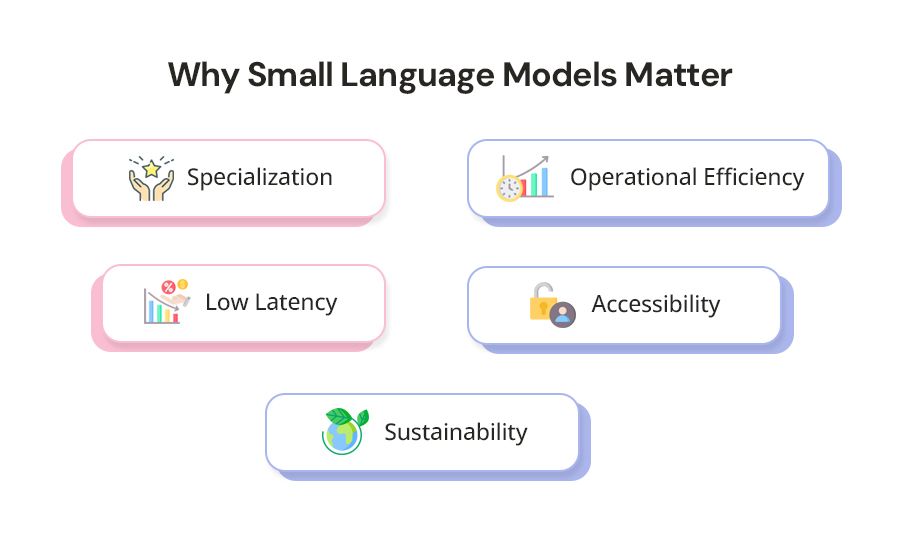
In practice, SLMs don’t just automate tasks—they spark innovation across various fields.
Customer Support: Revolutionizing Service with AI
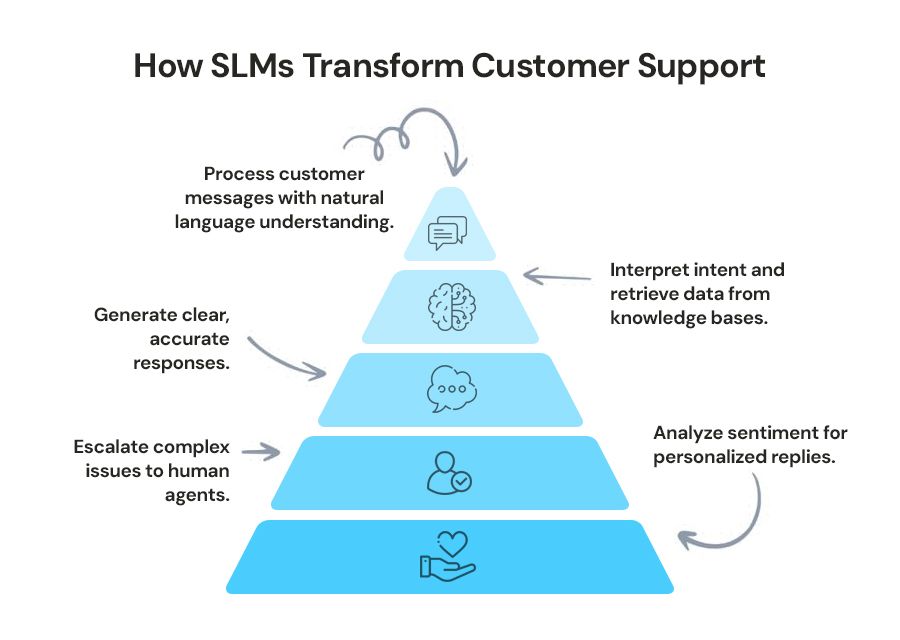
Customer service often involves repetitive, time-consuming tasks where agents answer similar questions repeatedly. Small language models, used in AI chatbots, allow businesses to manage thousands of customer inquiries with minimal human intervention. This delivers quick, accurate responses to common questions, freeing human agents to tackle more complex issues.
Behind the Scenes: SLMs process customer messages through natural language understanding, interpret intent, retrieve relevant information from databases or knowledge bases, and generate clear, accurate responses. They track customer interactions over time, enabling consistent replies across diverse inquiries. For complex issues, the ai services escalates to human agents and can analyse sentiment to adjust responses for a more personalised experience.
Example: Zendesk’s Answer Bot uses AI to address FAQs like “How do I reset my password?” or “Where is my order?” by pulling answers from a company’s knowledge base. This reduces wait times, improves customer satisfaction, and allows human agents to focus on intricate problems.
Healthcare: Streamlining Administration and Diagnostics
Healthcare providers handle massive datasets—patient records, test results, and research papers—that can overwhelm staff. SLMs simplify these tasks by quickly processing information, aiding diagnostics, conducting initial symptom checks, and documenting patient histories, allowing professionals to focus on patient care.
How They Operate: SLMs analyze extensive datasets, such as patient records or clinical summaries, to assist with scheduling, billing, and documentation. They support diagnostics by reviewing patient data, suggesting treatments, and flagging urgent issues. In some cases, SLMs perform symptom triage, provide preliminary diagnoses, and prioritize complex cases for physicians, even identifying early warning signs of potential health issues.
Example: IBM Watson for Health processes vast amounts of medical data. Watson for Oncology, for instance, reviews cancer research and patient records to help oncologists recommend personalized treatment plans, saving time and improving patient outcomes.
Education: Personalizing Learning Experiences
SLMs transform education by explaining complex concepts, acting as virtual tutors, and assessing student progress in real time, making learning more flexible and accessible for students at all levels.
Their Approach: SLMs analyze students’ learning patterns and adjust content accordingly. If a student struggles, the AI provides alternative explanations, additional examples, or extra practice. Real-time feedback, comprehension checks, and quizzes track progress, creating a customized learning experience that adapts to individual needs.
Example: Khan Academy uses AI to provide on-demand help, guiding students with hints and steps tailored to their pace. The system adjusts lessons based on performance, making education more accessible and effective, even in remote regions.
Marketing: Streamlining Content Creation and Targeting
Marketing teams need to produce engaging content quickly. SLMs automate content creation, allowing marketers to focus on strategy and campaign optimization for better results.
The Process: SLMs analyze customer data—demographics, purchase history, and browsing habits—to create personalized marketing content. They automate tasks like generating ad copy, emails, product descriptions, and social media posts. By analyzing campaign performance through A/B testing, SLMs refine strategies to improve engagement and conversions.
Example: Copy.ai acts as a virtual copywriter, producing high-quality blog posts, ad copy, and social media content. This reduces manual effort, allowing marketers to focus on creative strategy and targeted campaigns.
Finance: Automating Reports and Insights
Finance professionals manage vast datasets and require timely insights for decision-making. SLMs automate report generation, financial analysis, and client query responses, reducing manual work, minimizing errors, and speeding up decisions.
How It Functions: SLMs process financial data—transaction records, statements, and market trends—to generate reports like profit and loss statements or forecasts. They flag anomalies or unusual transactions for risk management, helping professionals address issues before they escalate.
Example: KPMG uses AI to streamline audits and compliance, analyzing financial data for discrepancies or risks. This saves time on manual checks, predicts market trends, and provides clients with actionable insights for better decisions.
Legal Services: Speeding Up Document Review and Contracts
The legal industry spends significant time reviewing contracts and documents. SLMs automate these tasks by scanning for key clauses, suggesting edits, and reducing time spent on routine work, freeing legal professionals for strategic tasks.
Their Mechanism: SLMs review large legal texts, identifying critical clauses or problematic wording in contracts and suggesting edits based on legal standards. They also assist with legal research by sifting through case law, statutes, and opinions to provide relevant precedents for complex questions.
Example: ROSS Intelligence uses AI to help lawyers research by answering specific questions, like “What are the precedents for breach of contract in this jurisdiction?” It retrieves relevant legal documents, saving time and improving efficiency.
Retail: Enhancing the Shopping Experience
SLMs improve retail by offering personalized product recommendations, managing inventory, and automating customer service, leading to better customer satisfaction and business performance.
How They Work: SLMs track customer behavior—purchase history, searches, and browsing patterns—to recommend relevant products. For example, a customer buying athletic wear might receive suggestions for matching accessories. SLMs also analyze trends to predict demand, optimizing inventory management.
Example: Amazon’s recommendation engine uses AI to suggest products based on browsing and purchase history. These recommendations evolve with each interaction, creating a personalized shopping experience that boosts sales and customer loyalty.
Human Resources: Simplifying Hiring and Management
HR departments handle repetitive tasks like resume screening and employee queries. SLMs automate these processes, allowing HR professionals to focus on talent development, employee engagement, and strategic goals.
Their Role: SLMs screen resumes by matching keywords, conduct initial candidate interviews, and answer common employee questions. They analyze performance data and feedback to identify improvement areas and recommend tailored training or support.
Example: HireVue uses AI to evaluate video interview responses, analyzing tone, word choice, and body language to assess candidate suitability. This reduces hiring time and allows HR teams to focus on final selections.
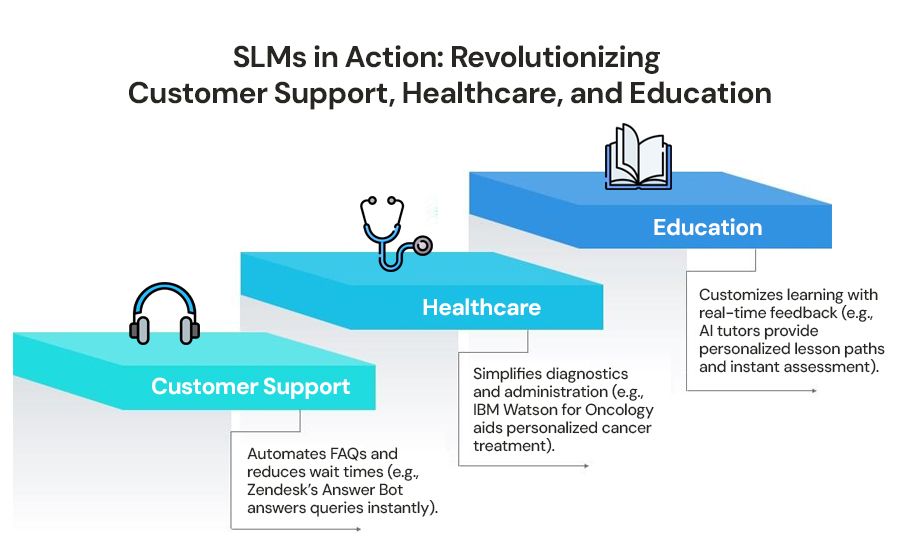
Conclusion
Small language models streamline operations by automating tasks, processing vast datasets, and generating human-like text, making them invaluable for businesses worldwide. Their ability to reduce costs, save time, and improve user experiences is transforming industries. From healthcare to retail, SLMs simplify complex processes, reduce human workload, and drive efficiency. As technology advances, these models will continue to reshape how businesses and industries operate, paving the way for a more efficient future.
Make Your Work Easier with Small AI Models

